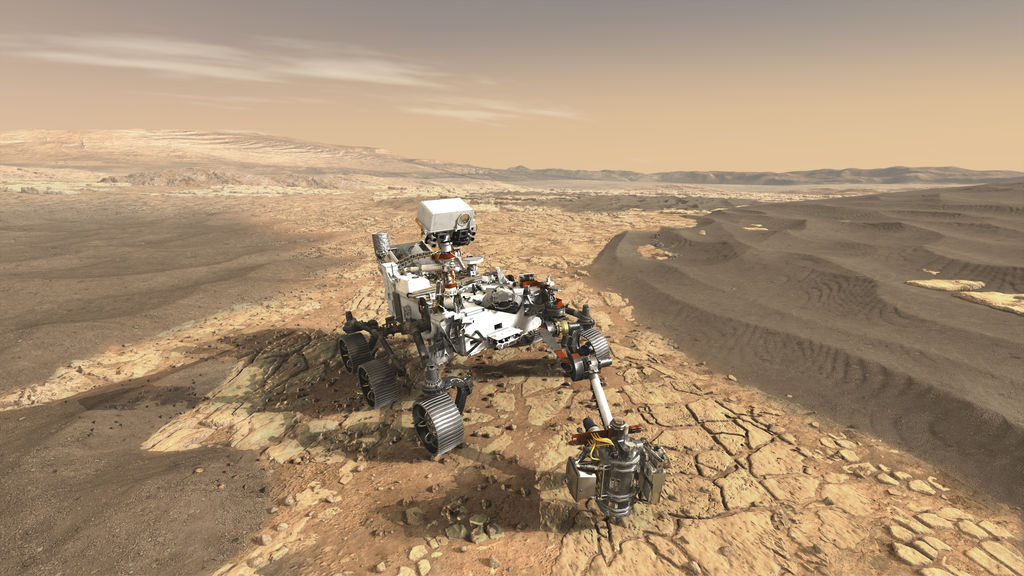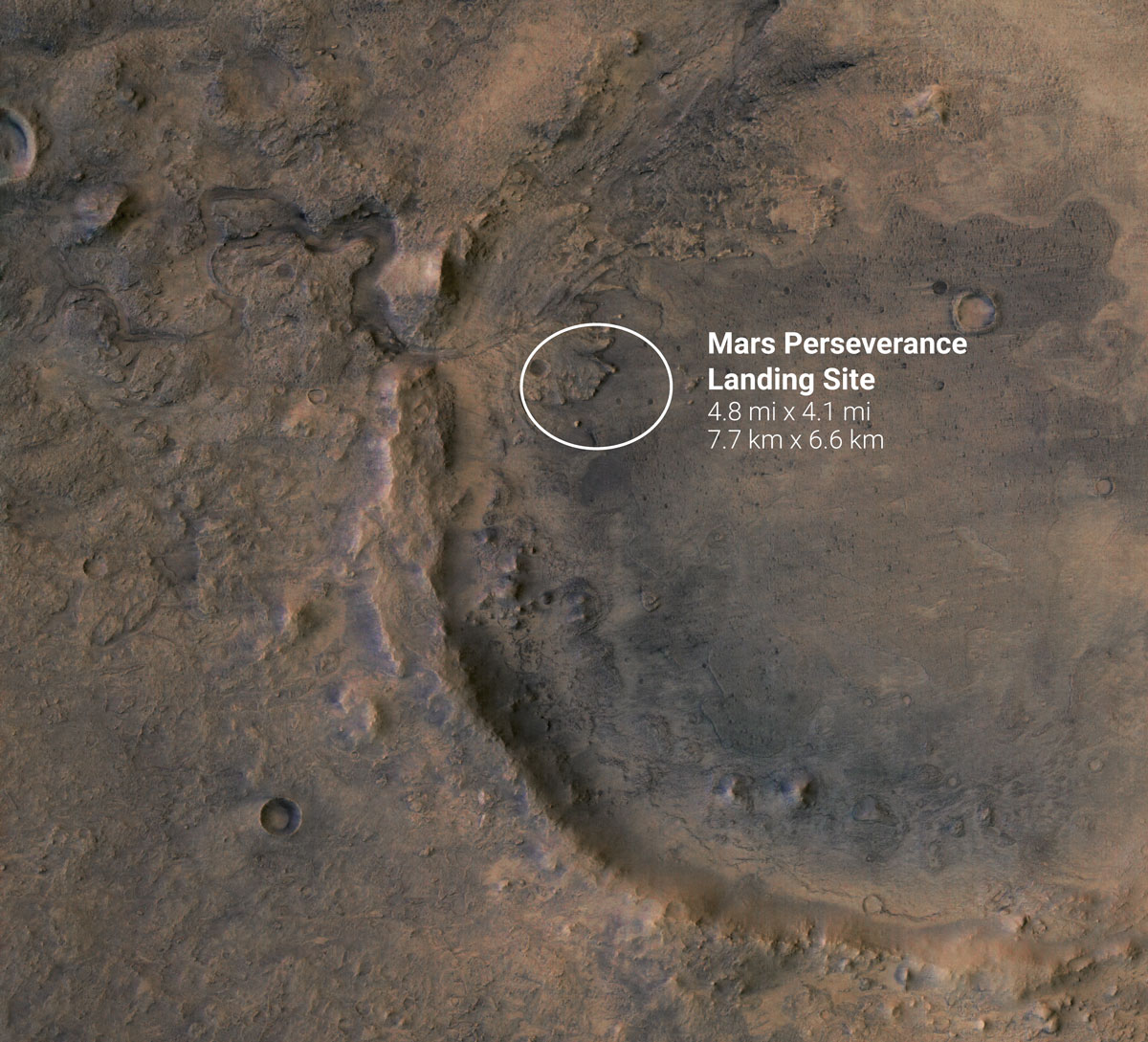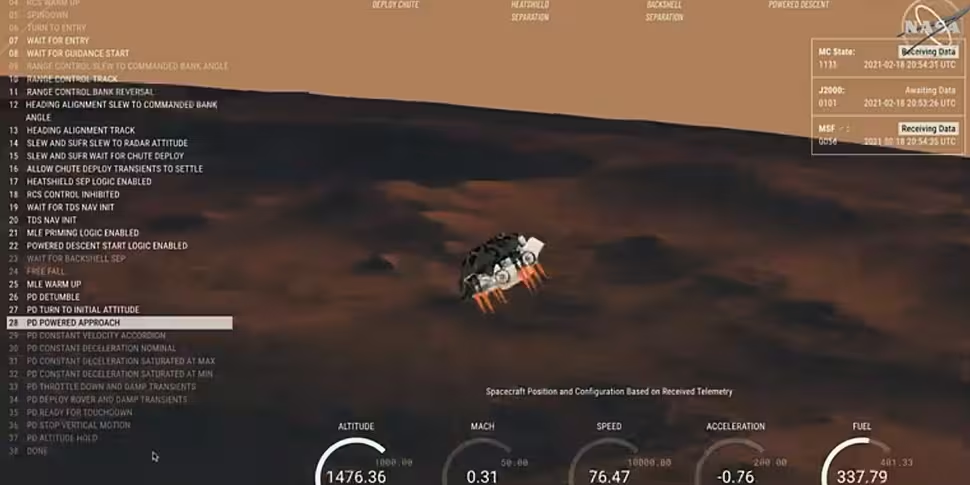A craft designed to look for signs of life on Mars has landed safely on the red planet.
NASA's Perseverance rover will collect samples of rock and soil for eventual return to Earth.
Similar in size to a car, it is the heaviest rover ever sent to the surface of Mars.
Cheers erupted in mission control at NASA's Jet Propulsion Laboratory in California, as controllers confirmed it touched down safely on Thursday.
 An illustration of the Perseverance rover on Mars. Picture by: NASA
An illustration of the Perseverance rover on Mars. Picture by: NASAIt is carrying a variety of experiments to help scientists study the planet.
The rover has a drill to collect core samples of Martian rock and soil, then store them in sealed tubes for pickup by a future mission that would bring them back to Earth for analysis.
It will also test technologies to help pave the way for future human exploration of Mars.
The rover has already sent photos of the Martian surface back to Earth.
Hello, world. My first look at my forever home. #CountdownToMars pic.twitter.com/dkM9jE9I6X
— NASA's Perseverance Mars Rover (@NASAPersevere) February 18, 2021
Strapped to its belly is the Mars helicopter, called Ingenuity, which will test the first powered flight on another world.
A series of flight tests will be performed over a 30-Martian-day experimental window that will begin sometime in the spring.
For the very first flight, the helicopter will take off a few feet from the ground, hover in the air for about 20 to 30 seconds, and land.
NASA says that will be a major milestone: the very first powered flight in the extremely thin atmosphere of Mars.
After that, the team will attempt additional flights of farther distance and greater altitude.
NASA says there are many ways that the mission helps pave the way for future human expeditions.
These include testing a method for producing oxygen from the Martian atmosphere, identifying other resources (such as subsurface water), improving landing techniques, and characterising weather, dust, and other potential environmental conditions that could affect future astronauts living there.
 The landing site of the Perseverance rover on Mars. Picture by: NASA
The landing site of the Perseverance rover on Mars. Picture by: NASAAnd NASA says there are several strategic, practical and scientific reasons for humans to explore the planet.
Among them are that Mars is the most accessible place in the solar system.
While exploring it provides the opportunity to possibly answer origin and evolution of life questions - and could someday be a destination for survival of humankind.
"From a practical perspective we know that Mars is unique across the entire solar system in that it is a terrestrial planet with an atmosphere and climate, its geology is known to be very diverse and complex (like Earth), and it appears that the climate of Mars has changed over its history (like Earth)", NASA notes.
"Overall, many of the key questions in solar system science can be addressed effectively by exploring Mars.
"This endeavor also serves to inspire the next generation of explorers and dramatically expand human knowledge."









